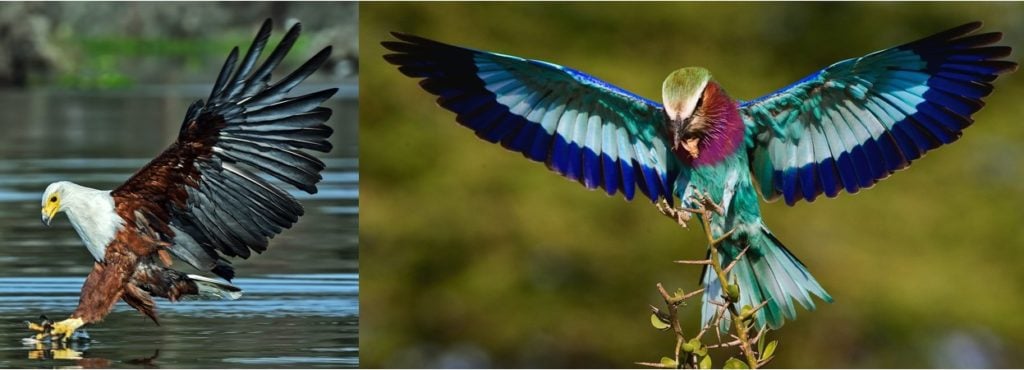3 COMMON Birds Found in Morocco! (2025)
Are you trying to identify a bird found in Morocco?

Some of the wildest and most colorful birds you could imagine are found here. From gigantic, flightless birds to colorful showstoppers, there’s something to catch everyone’s attention!
Due to the sheer number of species, there was no way to include every bird in Morocco in this article. So instead, I tried to focus on the birds that are most regularly seen and observed.
3 COMMON types of birds in Morocco!
#1. Common Hoopoe
- Upupa epops

Identifying Characteristics:
- Adults are 25–32 cm (9.8–12.6 in) long with a wingspan of 44–48 cm (17–19 in).
- Its coloring is cinnamon-brown on the head and body, with black and white barred wings.
- The head is adorned with a crest of brown feathers tipped in black.
Look for the Common Hoopoe in rural gardens, cities, plantations, savannas, and grasslands. They often spend time near piles of rotting leaves or a fallen log where insects, grubs, and worms will use it as a habitat. It’s like a buffet for the Hoopoe!
This unusual-looking bird has a variety of defensive tactics. Its movable crest is used for advertising and intimidating potential predators and rival Hoopoes. If that doesn’t work, this species is ready for a fight! They use their strong head and neck muscles to gouge their long, pointed beaks into opponents’ eyes, which can blind them.
In addition to their fighting skill and intimidating looks, they produce a substance that smells of rotting meat. They cover themselves and their eggs with the substance to warn away predators. Nestlings even have their own scent gland that makes them unappetizing to predators.
#2. Helmeted Guinea Fowl
- Numida meleagris

Identifying Characteristics:
- Adults grow up to 53-58 cm (21-23 in).
- Their coloring is black with white spots. The legs are black, and the featherless head is bright blue with red on the face.
- This species has a large, round body and a very small head and neck.
These chicken-like birds in Morocco are capable of flight but only do so when in danger.
Instead, they walk up to 10 kilometers (6 miles) daily in their quest for food. They’ll eat anything from small mammals and lizards to worms, insects, frogs, small snakes, snails, seeds, fruit, and spiders.
Outside breeding season, they form flocks of up to 24 birds and roost communally so they can alert each other to predators. They have an explosive take-off and only flap for short distances, gliding for longer flights. They prefer to flee from predators on land and can run 35 kph (22 mph) on land.
Helmeted Guineafowl have various calls, and some are more pleasant than others. For example, their whistling tune is much nicer on the ears than the raucous and irritating one found here.

#3. Pied Crow
- Corvus albus

Identifying Characteristics:
- Adults are 46-52 cm (18-20 in) long.
- Their coloring is completely black, except for the stark white “vest” between their wings and across their chest.
If you’ve ever wondered about the difference between a crow and a raven, studying the Pied Crow is a good way to learn! This bird in Morocco is considered a “link” between the two related families. It has the larger bill and long legs of a raven, as well as wider wings and a longer tail. However, its beak is small and straight like a crow’s, and it also has the typical “caw” call.
Pied Crows are often found near humans, but they don’t interact with people very much. They seem to like villages and towns, probably because of the abundance of food due to human refuse.
They are social and may congregate near an abundance of food but are generally found in pairs or small groups. Pied Crows eat reptiles and mammals, nestlings and eggs, insects and invertebrates, peanuts, grains, carrion, and human trash. If there is a slaughterhouse in the vicinity, you’ll almost certainly find them there, too.
Do you need help identifying birds in Africa?
These books will provide you with much more information!
Which of these birds in Morocco have you seen before?
Leave a comment below!




